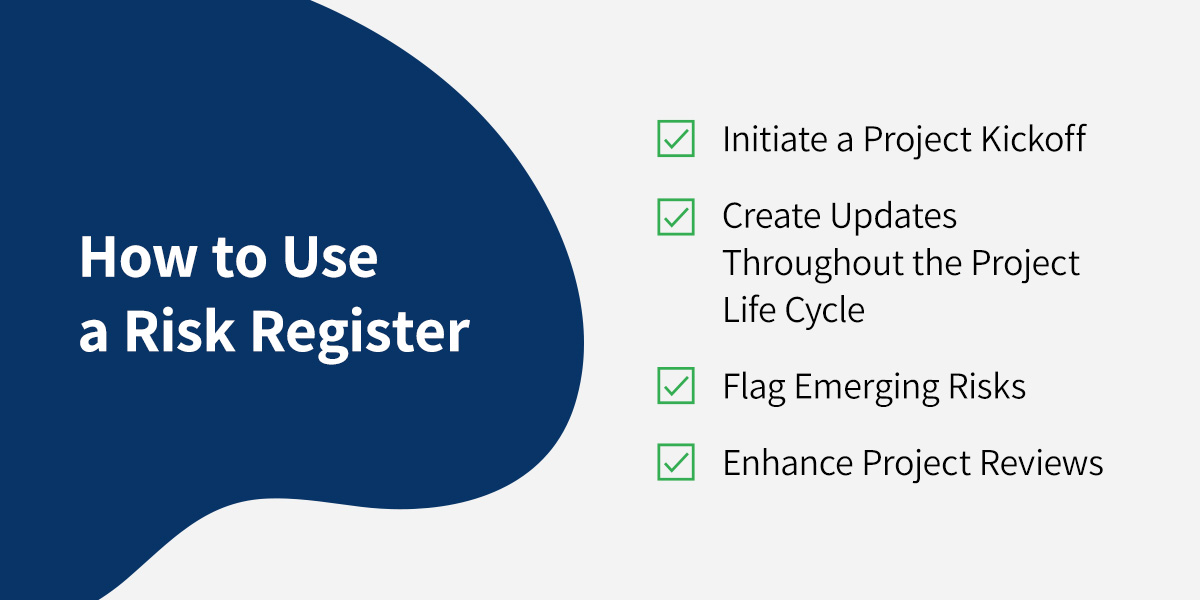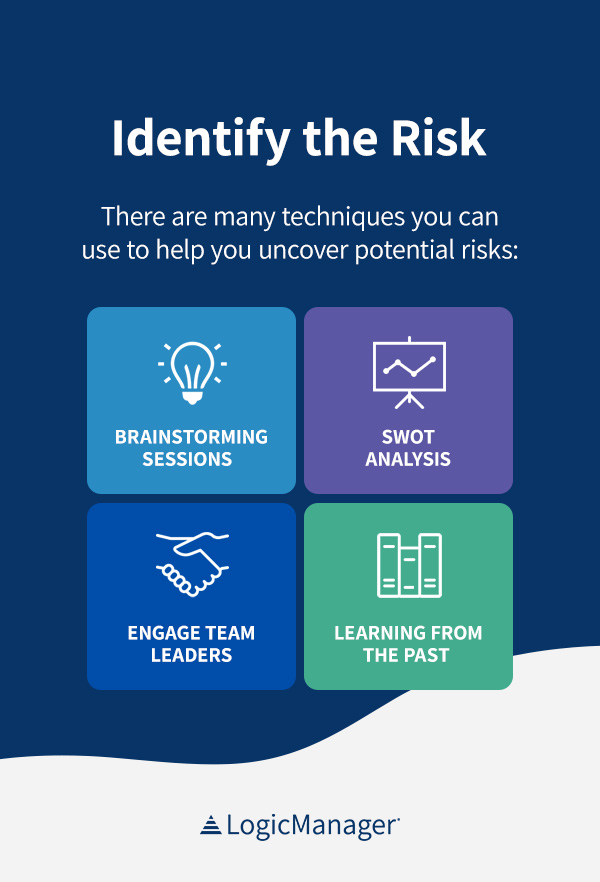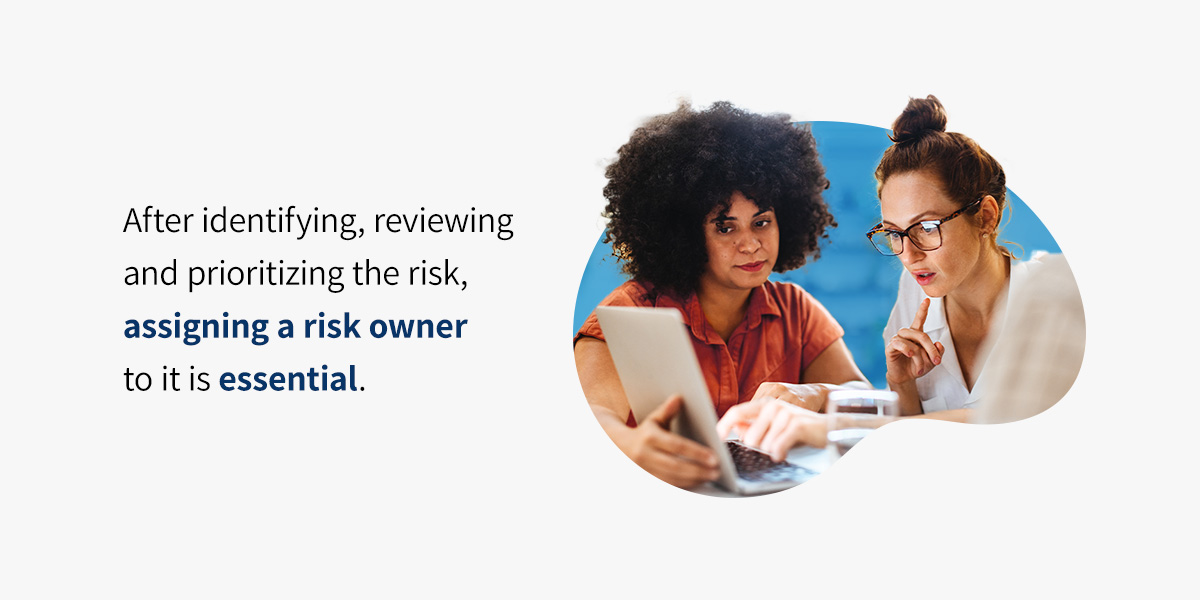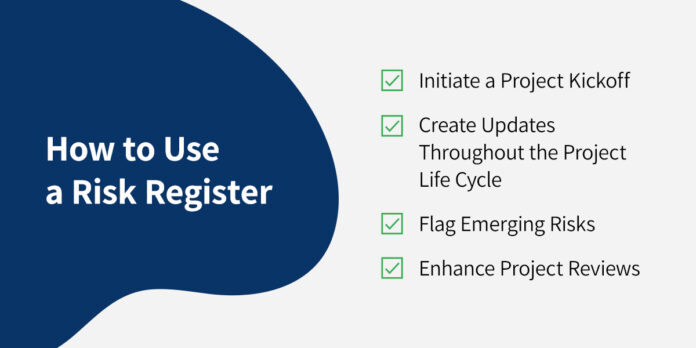Managing threat with no clear system in place could be difficult. Confusion, missed alternatives and expensive surprises are simply among the penalties which will comply with. Nevertheless, a threat register can flip issues round.
With a well-designed threat register in place, you get greater than only a documentation instrument. You may set up a constant and structured methodology of figuring out, assessing and managing potential dangers throughout your group. It brings much-needed construction to a threat administration course of, however solely when accomplished proper.
Under, we discover what a threat register is and methods to create one. By the top of this detailed information, we hope that you just’ll be empowered to develop an efficient threat register that helps knowledgeable decision-making.
What Is a Threat Register?
A threat register or threat log is a crucial venture administration instrument that helps organizations establish, consider and handle venture dangers all through a venture’s life cycle. You may consider it as an organized record that highlights potential dangers, helps you assess their precedence and descriptions related methods for mitigation.
Threat registers in venture administration are vital as a result of organizational challenges are a given. From expertise shifts to unpredictable buyer preferences and labor shortages, these are only a few on a regular basis examples of challenges that many companies face. Having a threat log is actually your approach of empowering your staff to anticipate dangers and making certain their response will give your group the absolute best final result.
Key Parts of an Efficient Threat Log
Creating an efficient threat log entails 4 key components:
- Threat identification: That is the place you identify the chance to make sure everybody is aware of what it entails and assign a novel identification (ID) quantity to make monitoring and referencing simpler. You too can present a short description that features the character of the chance and its implications.
- Evaluation: This entails evaluating the probability of the chance occurring and its potential influence on the group.
- Response: After figuring out and assessing the chance, it’s important to create a threat response plan with mitigation methods that your staff can comply with ought to it happen.
- Possession: Each threat ought to have a delegated proprietor who will regularly monitor, handle and report on its standing.
Advantages of Utilizing a Threat Register
Implementing a threat log isn’t only a “finest practices” strategy. It’s a proactive strategy to offer your staff a strategic benefit in a number of areas:
- Challenge threat administration: Once you establish potential dangers early on within the venture, you can too establish options and construct these into your venture plan.
- Improved decision-making: With a threat log, there shall be no guesswork. It offers venture managers a transparent define of what to do when a threat happens.
- Documentation: As your staff identifies, analyzes and creates threat response plans, they need to work from one central level to centralize documentation and keep away from any potential miscommunications.
- Enhanced communication: Threat registering permits your staff to work collectively to establish dangers and discover options to those dangers. They could additionally use collaborative instruments, all of which may help enhance communication within the staff.
- Accountability: Once you assign house owners to the dangers, you make sure that the suitable folks can work on and comply with the response plans.
Easy methods to Use a Threat Register


It’s finest to make use of a threat register from the very starting of a venture and constantly replace it all through each section. You should use it in a number of methods:
Provoke a Challenge Kickoff
In the course of the planning section, it’s vital to establish potential dangers that might influence the venture’s success. For instance, in a development venture, the chance supervisor would possibly log dangers associated to security rules, surprising climate situations or delays in acquiring constructing permits. By documenting these dangers early on, the staff can develop methods to beat them.
Create Updates All through the Challenge Life Cycle
Because the venture progresses, some dangers could also be resolved, and a few could change. It’s important to often evaluate the threat log to make sure it’s at all times up to date on the present standing of recognized dangers.
Flag Rising Dangers
New dangers can come up at any level in a venture. The danger log may help you develop an early warning system to flag these rising dangers. One other threat register instance could be for an IT firm that’s making ready for a product launch and will get challenges with third-party integrations. The danger log can flag potential delays early and assist the staff establish different integration choices.
Improve Challenge Critiques
Integrating the chance register along with your common venture opinions may help you retain all stakeholders knowledgeable. It creates transparency and may help encourage collaboration in addressing dangers.
Threat Register vs. Threat Report
Each threat registers and threat studies are important instruments utilized in threat administration. Nevertheless, they serve completely different functions.
A threat register has:
- Detailed info on potential dangers, together with their description, probability of occurring, influence on the enterprise and your deliberate responses to those dangers.
- Common updates that replicate the present statuses of every threat.
- All kinds of entries, from high-level strategic dangers to small operational issues. Every of those entries may even have a plan in place to mitigate these challenges.
However, a threat report is actually a abstract of all of the risk-related info from the chance log. It makes the info extra digestible for stakeholders who could not wish to dive into the small print. You too can consider it as a abstract of all crucial dangers and what’s being accomplished about them.
A threat report will sometimes embody:
- Record of key dangers recognized and their potential influence on the group
- The progress of mitigating these dangers
- Periodic era, for instance, month-to-month or quarterly
Easy methods to Create a Threat Register
Creating a threat register is a step-by-step course of that, when adopted accurately, may help you shortly establish and mitigate many potential dangers.
1. Establish the Threat
To establish potential dangers, begin by understanding your venture’s objectives, scope and key actions. Then, ask your self one vital query — what might go flawed?


There are a lot of methods you need to use that will help you uncover potential dangers:
- Brainstorming classes: Collect your staff for a brainstorming session. Encourage open dialogue the place everybody can share their ideas on potential dangers. This strategy may help you achieve a extra complete understanding of potential challenges.
- SWOT evaluation: Evaluate your strengths, weaknesses, alternatives and threats (SWOT). This may help you establish inside and exterior elements that may be dangers.
- Interact staff leaders: Contain completely different staff leaders that will help you achieve numerous views on potential dangers.
- Studying from the previous: Evaluate previous tasks, trade benchmarks and classes realized. This may occasionally enable you to uncover a standard threat sample.
A software-as-a-service (SaaS) mannequin for threat administration, like LogicManager’s enterprise threat administration (ERM) options, permits organizations to configure a scalable resolution to establish and handle dangers.
When you’ve recognized the potential dangers, it’s important to obviously describe every and its potential influence on the venture and group. You’ll additionally have to allocate a novel identify identification date to make monitoring the chance simpler all through the venture course of.
2. Assess the Threat
Within the earlier step, we listed each potential threat. Nevertheless, not all dangers are created equal. This stage in making a threat log is about understanding how probably a threat can happen and the way severe the results can be if it did. This section helps you understand which dangers want essentially the most consideration.
Start by evaluating every threat based mostly on the elements of probability and influence. You should use a scoring system of 1 to 5 for every threat — one for not possible to happen or negligible influence, and 5 for nearly sure to occur or catastrophic influence. For instance, contemplate a threat associated to a software program bug found late within the improvement stage of a brand new app. You would possibly assess it as follows:
Subsequent, you’ll wish to calculate the chance ranking by including the 2 scores. This gives you a numerical worth that helps you quantify the chance. Utilizing the earlier instance:
- Probability rating: 3
- Impression rating: 4
- Threat ranking: 3 + 4 = 7
After calculating your threat ranking, you’ll have to prioritize the dangers. Group them based mostly on their scores. For instance, low threat (1 – 3), medium threat (4 – 6), Excessive threat (7 – 9).
The final section of assessing your dangers shall be to stipulate the fast responses for every class:
- Low threat: Monitor the state of affairs and regulate any modifications
- Medium threat: Develop a response plan to mitigate the chance
- Excessive threat: Implement fast measures to deal with the chance
3. Categorize the Threat
Categorizing the dangers helps to deliver construction and readability to your threat administration course of. As an alternative of getting to cope with a protracted record of scattered potential dangers, you’ll be able to categorize comparable dangers collectively and make it simpler to research patterns, prioritize responses and assign tasks.
To categorize your dangers, you’ll be able to:
- Begin by selecting a class framework: Operational, finance, compliance, authorized and exterior are some frequent classes you would possibly select.
- Assign a class for every threat: When logging every threat, observe the class alongside it.
- Use the classes to filter and analyze: Evaluate grouped dangers often to identify tendencies, allocate assets and alter threat response plans accordingly.
4. Create a Threat Response Plan
Making a threat response or mitigation plan helps you define methods to deal with each recognized threat.
You’ll have to develop clear and actionable steps to deal with every threat you’ve recognized. This contains the timeline for implementing these actions, the assets required and any particular situations or occasions that may “set off” or activate the response plan. The plan must also clearly talk the supposed final result to make sure that everybody understands the aim of the plan.
For organizations seeking to improve their threat administration capabilities, instruments like LogicManager’s Threat Ripple software program may help. This software program automates and centralizes threat monitoring, integrating synthetic intelligence (AI) to assist organizations predict how dangers can have a ripple impact throughout a corporation
5. Assign Threat House owners


After figuring out, reviewing and prioritizing the chance, assigning a threat proprietor to it’s important. That is basically the individual chargeable for overseeing the implementation of the response plan.
You will want to assign an proprietor to each threat you’ve recognized. The proprietor wants to know the influence of the chance intimately. This would possibly embody the pinnacle individual overseeing the chance in addition to the extra staff members who will handle that particular threat.
The danger house owners may have to carry out extra analysis for options after which proceed to replace the chance log when there’s new info so as to add.
6. Monitor and Evaluate Dangers
The danger proprietor might want to preserve the chance register up to date. It ought to accurately replicate modifications or progress on the dangers. New dangers could be recognized all through the venture. These ought to be famous and included within the threat log if or once they happen. Having a daily threat register assembly can be good observe to maintain reviewing and addressing the dangers as crucial.
Threat Ripple Analytics helps organizations perceive the “unknown knowns,” or how dangers are interconnected. It allows you to see the larger image and make extra knowledgeable choices, resembling creating stronger mitigation methods or reallocating sure assets.
7. Point out Threat Standing
Lastly, it’s important to point the standing of every threat. It helps the entire staff perceive whether or not or not the dangers have been efficiently addressed.
You should use language resembling:
You too can add extra particulars to the standing by including extra fields, resembling:
- Not Energetic
- On maintain
- Not but began
The extra clear the chance house owners are, the better it may be for everybody to remain on the identical web page.
Utilizing Threat Register Templates
A threat register template is a handy strategy to deliver consistency, readability and effectivity to your threat administration course of. As an alternative of ranging from scratch with each new venture, you’ll be able to merely use a template that gives a structured format for capturing all of the vital particulars.
Save Time, Guarantee Consistency and Scale back Oversights With LogicManager
A well-maintained threat log is likely one of the strongest instruments for a threat supervisor. It helps you shortly establish, categorize, assess and reply to potential threats earlier than they escalate. This may help deliver construction, readability and accountability to your threat administration course of.
Whether or not you’re working a single venture or overseeing a number of dangers throughout the whole group, having a centralized, constant resolution may help. That is the place LogicManager is available in. Our software program gives a centralized resolution that automates information seize, threat scoring and reporting. The Threat Ripple Analytics characteristic offers you a greater understanding of how one threat would possibly have an effect on the following so you can also make extra knowledgeable choices, making your threat administration efforts extra environment friendly and efficient.
Contact LogicManager at this time or request a demo to find out how we may help streamline your threat administration course of and higher perceive your group’s threat panorama.


